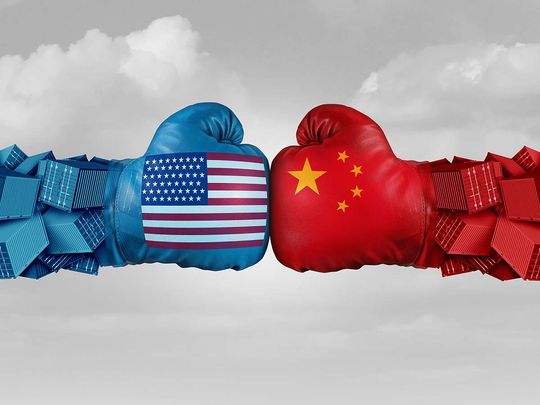
US President Joe Biden recently announced significant tariff increases on a range of Chinese imports, including electric vehicle (EV) batteries, computer chips, and medical products. This move risks an election-year confrontation with Beijing as Biden seeks to appeal to American voters who have rated his economic policies poorly.
“American workers can outwork and out-compete anyone as long as the competition is fair, but for too long it hasn’t been fair,” Biden stated during a speech in the White House Rose Garden, emphasising his commitment to preventing China from overwhelming the US market.
In response, China’s commerce ministry expressed strong opposition and pledged to take retaliatory measures. Biden’s new tariffs will maintain those imposed by former President Donald Trump while increasing others, such as raising EV duties to over 100% and doubling semiconductor tariffs to 50%. Further, there is an increase of 25 per cent tariff on Chinese steel and aluminium products to counter China’s overcapacity in these industries.
Similarly, a 25 per cent tariff increase on electric vehicle batteries from China and a 25 per cent tariff on the critical minerals used to make those batteries. These measures will impact $18 billion worth of Chinese imports.
There are eight key implications of this move. First, the increased production costs due to tariffs will likely continue to contribute to inflationary pressures within the US and globally as the cost of green energy goes up. Consumers worldwide may face higher prices for goods heavily affected by the tariffs, particularly in electronics, automotive, and consumer goods.
Second, since renewable energy projects will become more expensive and potentially less competitive compared to fossil fuels in the US, it will impact the achievement of green targets. Higher costs can slow the adoption of clean energy technologies, delaying the transition to a greener energy mix. Further, the US administration’s initiatives to invest in clean manufacturing could face setbacks due to higher costs and supply chain issues. Projects that produce clean steel, aluminium, and other materials domestically may become more expensive and face delays, impacting overall climate goals.
Third, in the near term, increased costs and supply chain uncertainties can lead to reduced investments in green technologies. Investors may be hesitant to fund projects with higher upfront costs and uncertain timelines. This can slow down the pace of innovation and the commercialisation of new green technologies, delaying climate change mitigation efforts.
Fourth, the trade tensions between the US and China can also strain international cooperation on climate change. Both countries are major players in global climate negotiations, and their collaboration is crucial for reaching global climate targets. Trade disputes can create a more adversarial relationship, making it harder to achieve coordinated efforts on climate action. This adversarial outlook could extend beyond climate issues.
China may retaliate with its tariffs, sparking a broader trade conflict. Such tit-for-tat measures have historically led to increased shipping costs and supply chain disruptions. For instance, during the Trump administration, tariffs significantly increased ocean freight rates from China to the US West Coast, which never fully returned to pre-tariff levels.
Fifth, the technological decoupling between the US and China will likely intensify. Both nations are expected to continue developing their technological ecosystems, reducing reliance on each other’s technology. This will likely lead to higher R & D investments in both countries and slower global technological integration.
Sixth, the US’ imposition of tariffs on Chinese goods reflects the absence of other practical policy tools for dealing with China, a situation partly attributable to its own role in making the World Trade Organisation (WTO) dysfunctional. By systematically blocking the appointment of judges to the WTO’s Appellate Body, the US has effectively crippled the organisation’s dispute resolution mechanism, which has been non-functional since December 2019, when the terms of the last remaining judges expired.
This strategic move, driven by concerns over judicial overreach and sovereignty, has left the WTO unable to adjudicate trade disputes, undermining its role in enforcing multilateral trade rules. The resulting obstruction is now backfiring on the US, particularly in addressing Chinese subsidies, as it has limited options other than imposing tariffs. This approach risks escalating trade tensions and imposes higher costs on American businesses and consumers. Thus, there is a larger issue of making WTO fully functional.
Level playing field
Seventh, Biden’s tariffs on Chinese goods have inadvertently provided a toolkit for other countries facing similar issues. By imposing these tariffs, the US has set a precedent that allies might follow, using trade measures to address their economic challenges with China. Countries struggling with China’s overproduction and market distortions may now consider similar tariffs or trade restrictions to protect their industries and level the playing field.
Eight, the tariffs could accelerate the trend towards deglobalisation. Companies may reduce dependency on Chinese manufacturing by diversifying their supply chains and increasing domestic production. This shift is evident in the Biden administration’s substantial investments in domestic semiconductor manufacturing through the CHIPS and Science Act, aiming to bolster US capacity and reduce reliance on China.
In the classic movie “Rocky IV,” Rocky Balboa takes on the seemingly unbeatable Ivan Drago from the Soviet Union, symbolising the start of a fierce and personal Cold War battle. Similarly, Biden’s tariffs on China mark just the beginning of a prolonged and intense trade conflict between the two economic superpowers, setting the stage for a high-stakes struggle over global economic dominance.
Aditya Sinha is Officer on Special Duty, Research, Economic Advisory Council to the Prime Minister of India. Views Personal.








